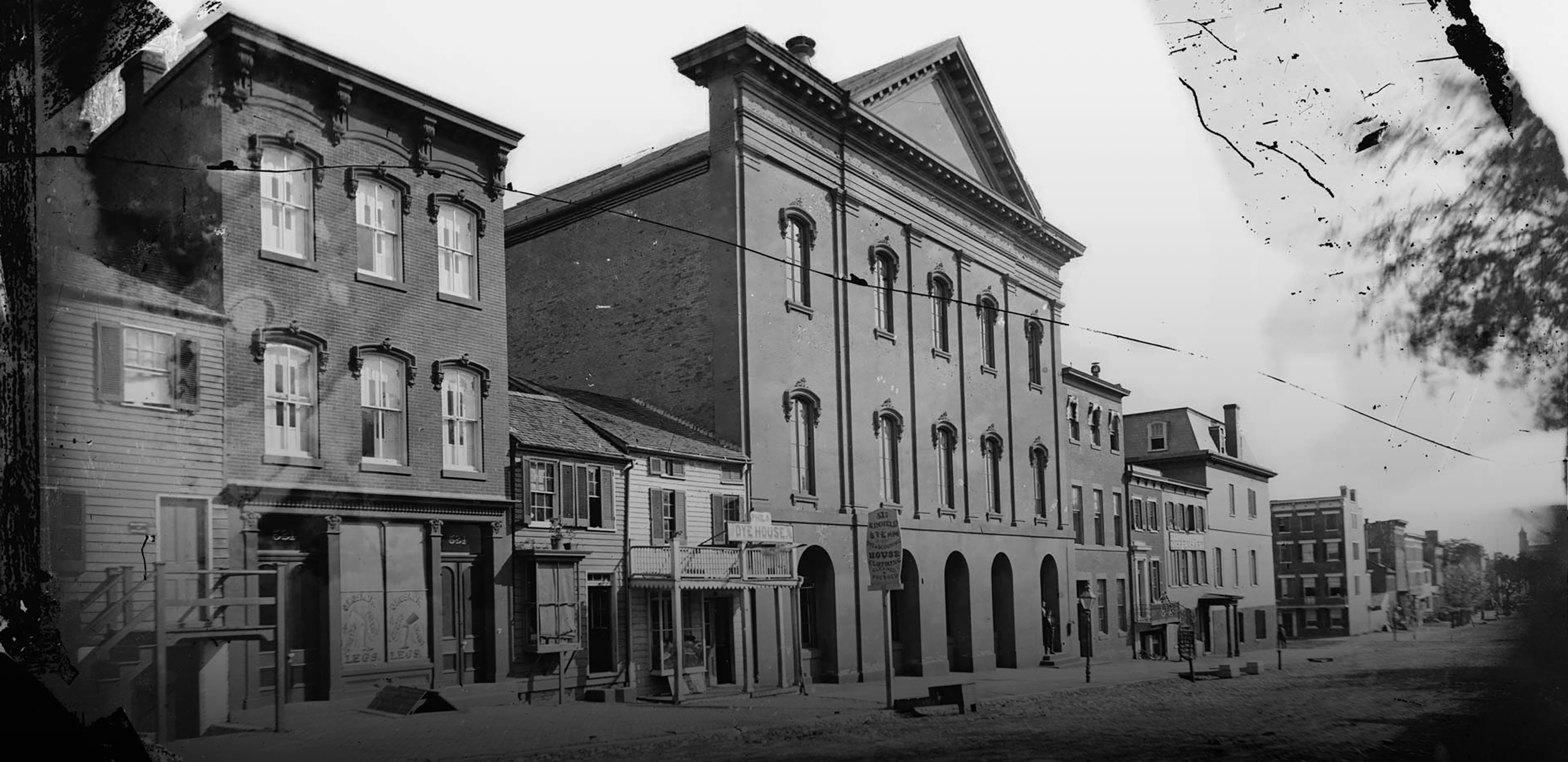
An African-American Hero Emerges from the Tragic Ford’s Theatre Collapse of 1893
If I asked you to name the first person you associate with Ford’s Theatre, you would probably answer Abraham Lincoln. Or perhaps the first name that pops into your head would be John Wilkes Booth. From there, depending on your level of history nerdiness, you might respond with Major Rathbone, Clara Harris, Ned Spangler or John T. Ford. One name I’m pretty sure you do not associate with our hallowed theatre is Basil Lockwood. I know I didn’t, until I did some research.
In my work managing our professional development programs for teachers, the Catherine B. Reynolds Foundation Civil War Washington and The Seat of War and Peace programs, we emphasize the importance of place-based learning. What can a specific place tell us about a moment in history beyond a single event that happened there? How can we uncover stories of everyday people who lived or worked at or near a place of historical significance? How does a place connect to its surrounding area? How can a place be used to examine individual communities and society as a whole?

While Ford’s Theatre and the Petersen House are central to the story of Abraham Lincoln’s assassination and death, a closer examination of those places can tell us a lot about Washington during the Civil War. In a recent post, I wrote about the effect the Civil War had on the economy and growth of Washington. By looking at the occupants of the Petersen Boarding House at the time of the assassination, I was able to determine that all of them were employed by the war-time economy.
Using Ford’s as a window into Washington history doesn’t have to end in 1865. I was recently reading newspaper accounts of the 1893 collapse of the third floor of the theatre, which killed 22 federal workers. By that point the theatre was being used as offices for the Record and Pension Division of the Surgeon General’s office. Shoddy interior construction led to the tragic June 9, 1893, collapse.

Something from an article the next day in the historic New York Tribune jumped out at me: “A Colored Boy’s Brave Work.” The article describes the dramatic heroics of Basil Lockwood, a black man in his early 20s. Immediately after the collapse, Lockwood climbed a telegraph pole behind the theatre and attached a ladder to a third-floor window, rescuing 15 or 20 people. So was Basil Lockwood employed by the Federal Government? Not yet.
A month later, the grateful, surviving clerks of the Record and Pension division invited Lockwood to their new offices and presented him with a gold watch. The watch was inscribed, “Presented to Basil Lockwood by the clerks in the Record and Pension Division, in recognition of his heroic conduct in the Ford’s Theater [sic] disaster of June 9, 1893.” In addition to the watch, the clerks petitioned Secretary of War Daniel Lamont to give Lockwood a job in the government.

This is amazing given the time it happened. Here you have a group of white federal workers petitioning a cabinet official to give a job to an African-American man in Washington, a southern leaning town, in the thick of the Jim Crow era. And it worked! Three months later Lockwood was given a job as a messenger in the War Department, earning $55 a month (approximately $1500 in today’s dollars).
Sadly, Lockwood’s good fortune was short-lived. Seven months after being hired, he was a victim of government layoffs. The Washington Evening Star describes his termination as, “among the number of employees dismissed yesterday in the interest of the economy.” I suspect the layoffs were one of the many results of the nationwide Panic of 1893, which caused massive unemployment and saw hundreds of banks close around the country.
I picked up Basil’s trail a year after his brief federal career. By 1895 he was working as a waiter in a restaurant at 520 Tenth Street NW, two doors up from the Petersen House and across the street from the building that made Basil a hero. Unfortunately on February 5, 1895, Basil became a villain. He allegedly attacked his boss, Edward Fick, with a knife in a drunken rage, demanding to be given his pay immediately.

This article describes the dramatic scene of the attack, in which Basil was about to stab his boss, only to be thrown down the stairs by Mrs. Fick, the restaurant owner’s wife. It also describes the trial and the overt racism on display by the Ficks and the judge presiding over the case. At one point, Mr. Fick uses the N-word to refer to Lockwood. In what strikes me as a courageous and defiant rebuke to the overt racism of the day, Lockwood’s African-American defense lawyer, responds, “If our ‘n——’, as you call them, were treated more civilly, such cases as this would be few and far between.” A month later, for reasons that are not reported, Lockwood was acquitted of the crime.
Using place as a stepping-off point allows us to follow the people associated with those places. In this case, the events of Basil Lockwood’s life on Tenth Street offer an inside look at some of the larger themes—economics, race and justice—that are in play at any particular moment in history, and how they affect the people who lived then. I wonder where Basil’s gold watch is today?
Jake Flack is Associate Director of Museum Education. He oversees our professional development programs for teachers and the school field trips program for local students.

